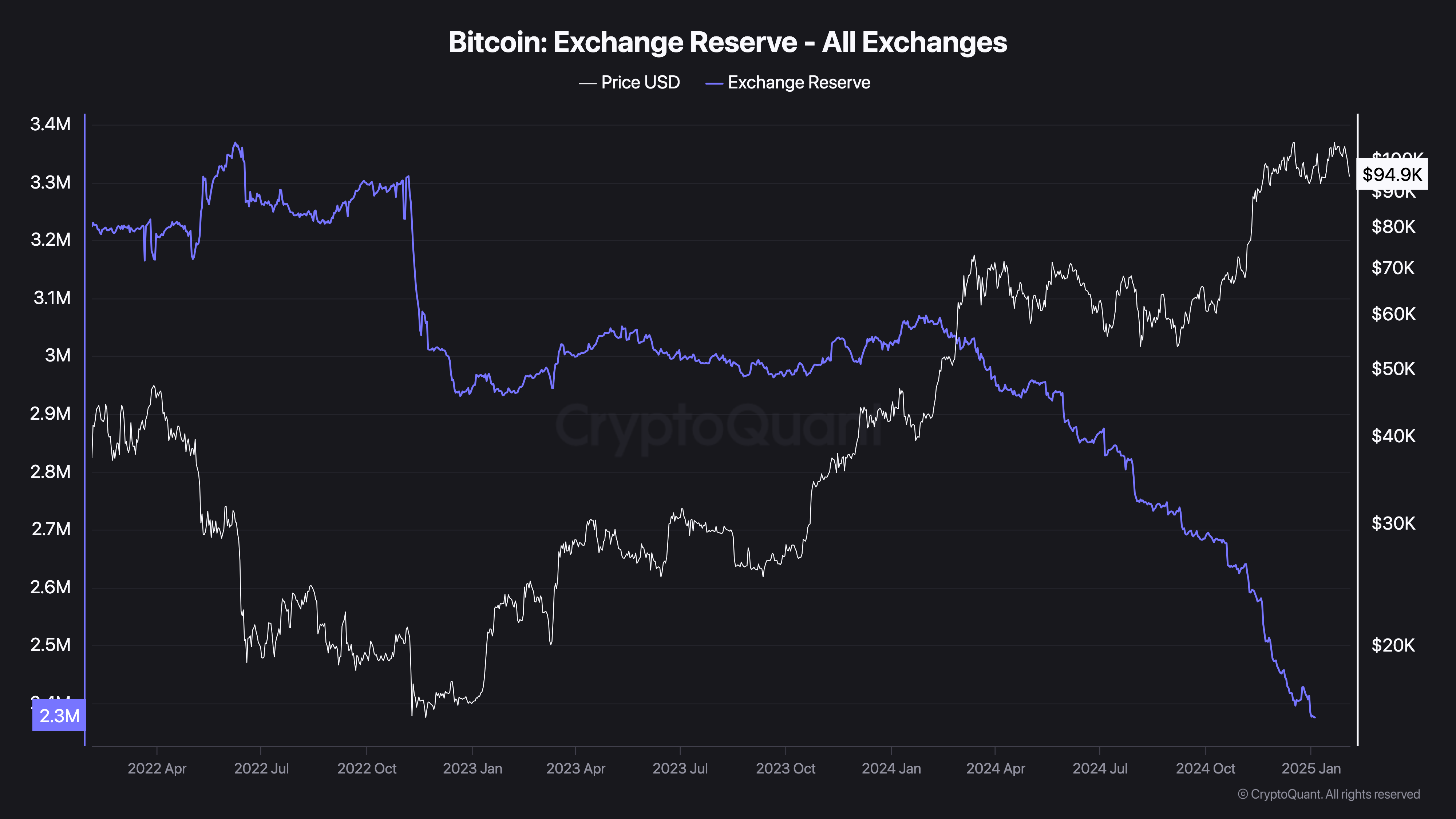After most significant failures of centralized platforms such as FTX, we could observe a large uptick in Bitcoin withdrawals by users from exchanges. However, there are more factors at play that would support the thesis of a long-term decline of Bitcoin on exchanges.
Over the last 2 years, Bitcoin exchanges have seen significant withdrawals. The movement from the exchanges to non-custodial wallets represents about 3,09% of the total bitcoin supply. 648,155 BTC (~$64bn) has been moved off exchanges, leaving around 2,638,936 BTC (~$260bn) held on these platforms.

We anticipate these withdrawals to non-custodial wallets will further increase due to the following reasons:
- Due to the increase in hacks and data breaches, there is an increased lack of trust in exchanges.
- With the growing implementation of the global FATF Travel Rule regulation, even more Bitcoiners are moving their coins off exchanges as the regulation limits the ability to transact freely.
Current and future
Shortly after the Mt.Gox hack in 2014, we saw an increase in non-custodial wallet usage. A repeat of this movement was observed after the FTX debacle, this time prompting novice users to move their coins off-chain. The EU's enforcement of the Travel Rule (also known as the Transfer of Funds regulation) since January 2025 is creating additional incentives to move bitcoins to non-custodial wallets. We expect those shifts to become visible in on-chain metrics in the first half of 2025.
This increased movement will be pushed even further with the implementation of the FATF Travel Rule in other regions. Since 2022, more than 10 regions have implemented the Travel Rule. Although the FATF recommendations are defined by a self-selected representative of bureaucrats from mostly OECD countries, some countries are swifter and stricter in implementing and enforcing them than others.
The UK, Switzerland and the EU have a particularly strict implementation of the Travel Rule, leaving their local exchanges and customers at a disadvantage over exchanges in less stung countries such as the US. This misalignment leads to further friction, making sending and receiving directly from one exchange to another more difficult, leading people to prefer non-custodial wallets over exchanges.
Potential impact
This shift of bitcoins from exchanges to non-custodial wallets is reducing liquidity, which could drive long-term value increases. A potential side effect of dealing with self-custody is the permanent loss of bitcoins, which could further reduce the effective total supply. With this movement, we also expect an increased sale of hardware wallets.




